- Home
- Thomas Keneally
A Commonwealth of Thieves Page 9
A Commonwealth of Thieves Read online
Page 9
Three longboats were prepared with three days' provisions for scouting up the coast. Arthur Phillip was to be accompanied by Captain Hunter and Captain Collins, by Lieutenant Bradley and a small party of marines spread throughout the three open boats. Putting out of the bay by dark on Monday morning, they found there was only a gentle swell as light came up on the aquamarine Pacific Ocean. It would be a witheringly hot day for the transports anchored in Botany Bay, but there was a sea breeze on the coast for Phillip's rowers. One of those who rowed the governor's longboat was the former American revolutionary soldier and now British seaman Jacob Nagle. Nagle's father had been a colonel in the Revolutionary Army and in 1777 Jacob, fifteen years old, joined his father in the field. When he was eighteen, Jacob Nagle served in a number of American naval vessels and privateers, until captured by the Royal Navy with seventeen fellow American sailors and transferred to HMS Royal Oak. He and his comrades found themselves perforce somewhere between prisoners of war and pressed members of the Royal Navy. The end of the Revolutionary War brought him to Plymouth and his journal implies that circumstances beyond his control kept him from returning at once to America. He formally joined the Royal Navy more or less as a means of working his way home, but it was a long process which he seemed pleased enough with as he dug his oars into the spectacular azure sea off New South Wales.
Sandstone cliffs interspersed with beaches and headlands marked the way north. Several parties of Aboriginals cried out to the three open boats as they proceeded along the coast, yelling, “Wer-re! Wer-re! Wer-re!” in emphatic tones. That afternoon, Phillip entered the heads of Port Jackson, a dimple on Cook's map of this coastline, named to honour the judge-advocate of the Admiralty but not investigated by Cook when he made his way up the coast in 1770. The great sandstone cliffs near the entrance decreased in size to become the weathered south head, whereas the north side displayed perpendicular heights. At some later stage, these gates to Port Jackson would be capitalised as South and North Head.
Phillip's boats ran around the southern head, up the middle of the tide rushing in from the Pacific, until they found themselves in a wide, bright blue bowl of sparkling water that stretched away particularly on the south side. The foreshores of Port Jackson were cliffs of sandstone thickly covered with dun green forest, interspersed with yellow beaches. Phillip was already enthused, and the general sobriety of his prose would be swept aside when he later told Lord Sydney, “We got into Port Jackson early in the afternoon, and had the satisfaction of finding the finest harbour in the world, in which a thousand sail of the line may ride in the most perfect security.” It was a sentiment which, coming from him, would certainly make his masters take notice. Not “one of the most accommodating anchorages one could encounter”; not “where some hundreds of ships might ride.” But absolutes: “the finest harbour in the world”; “a thousand sail.” The same number of sail Helen had launched in the war between Greeks and Trojans. The considered but exuberant sentiment would stand out unapologetically in the midst of Phillip's dutiful officialese, and it under-pinned his decisiveness in declaring this, and not the great Cook's Botany Bay, as the destined place.
They circled to one of the north-side bays of this great, unexpected harbour, which Phillip then or later named Manly Cove, as a tribute to the general style and demeanour of natives who appeared on the beaches that afternoon. Then, in the evening, they headed southwards down the harbour and landed at a place within the south head which they inevitably named Camp Cove, as a result of their pitching tents on a pleasant beach there. Nagle was impressed by the busyness of it all—marine sentries were put out and sailors were variously employed raising tents, making fires, throwing the seine into the harbour for fish. They had been the second set of Europeans into Botany Bay, but they were the very first people from the northern world to take their rest in Port Jackson.
AT FOUR O'CLOCK in the morning, that keen taskmaster Arthur Phillip had them up again, on their oars, with one boat in the lead sounding the way from one bay of Port Jackson to another. “We eat our breakfasts on our seats and pulled all day,” said Nagle.
The broad sweep of Port Jackson ran away pleasingly southwards, with much better soundings than Botany Bay. By late afternoon they reached a cove some seven miles inside the harbour of Port Jackson. This place gave excellent soundings close to shore—in fact, its good anchorages had been gouged out by a vanished glacier. The official party landed on the west side of this inlet, under bushy platforms of rock. They walked around to the head of the cove where the ground was level. There were scattered large eucalypts, cabbage tree palms, and low undergrowth, but more elevation and an utterly less swampy atmosphere than at Botany Bay. A good stream densely lined with ferns ran down the centre of the land and disgorged in the cove. It was pristine and plentiful even then, at the height of summer. The ridge on the eastern side struck Phillip and others as a potential site for the public farm.
Nagle, being the boat-keeper, had to remain aboard while the gentlemen made their reconnaissance, but he spent the time fishing and pulled up a bream. Returning, the governor and his party were in good form, Phillip very pleased with the cove. There was no need to go and look at Broken Bay to the north of Port Jackson. “As a situation for a town, he was determined to settle in this cove.” He saw the bream, which lay silver in the stern like a good sign, and asked who had caught it. Nagle admitted it was his.
According to Nagle, Phillip came up with the name for the inlet itself, saying, “Recollect that you are the first white man that ever caught a fish in Sydney Cove where the town is to be built.” Perhaps the decision to name the cove to honour the Home Secretary was as instantaneous as that. But it was a wise move for an uncertain expedition. A politician was less likely to forget a place named to honour him, a place whose deterioration might become a reflection on him. Phillip intended to name the township itself Albion, an ancient name for England, imbued with a certain holiness. But highfalutin Albion would never quite stick for the settlement, and the convicts and soldiers would use the name Sydney Cove, or Sydney Town, or simply Sydney for their penal municipality.
It already had a long-established Eora name—the Cadigal clan to whom it belonged called it Warrane. This whole country of vivid blue skies and water, sandstone headlands and ridges covered in vegetation, sandy bays and ocean beaches backed by marshland, tidal lagoons, and mangrove swamps, made the Eora a people united by salt water and a bounty of protein from the sea, from Port Jackson lying inside its heads Boree and Burrawara, from Kamay, their name for Botany Bay, and from the hinterland bush. By the standards of many of the earth's other nomadic peoples and by comparison with the more exacting conditions faced by the desert tribes of the far interior, it was a sumptuous life. The Eora had no need to travel great distances in search of food and water.
But their good fortune had passed. For longer than any other population of Homo sapiens, the ancestors of the Aboriginals were genetically and culturally cocooned from the rest of the world, and were right to suspect the freight of these ships. Phillip's sailors, soldiers, and convicts were walking incubators for viruses and bacteria barely before present on this coast. These micro-organisms too were looking for a new landfall and had the power to descend upon and mar the planet as known and cherished by the coastal clans.
seven
PHILLIP, HAVING REACHED THE HUGE harbour named Port Jackson and found a cove within it which he named for Sydney, came back to the ships in Botany Bay, and told their captains they would be sailing a final leg to take possession of it all.
Marine Captain Collins, who was to be the judge-advocate, was relieved, even though some trees had been felled at Point Sutherland and a sawpit dug just in case a better place could not be found. But, “had we been compelled to remain in Botany Bay, the swampy ground everywhere around it threatened us with unhealthy situations; neither could the shipping have ridden in perfect security when the wind blew from the south-east.”
At first light the nex
t morning, 24 January, when on Supply the stock was being watered, and everyone exhilarated at news of the coming move, the watch saw two ships just off the coast, trying to work their way into the bay. On the Charlotte, Watkin Tench thought the look-out who first announced the two new vessels was having delusions. Amongst the officers visiting each other for breakfast, there were a number of wild surmises. “Of what nation they could be, engaged the general wonder for some time, which at last gave way to a conjecture that they might be the French ships.”
At first Ralph Clark had hoped that they were ships from England; indeed, that idea ran through the fleet very quickly, and even the hope that they had been sent with a general pardon for all convicts and to order their return to England rocketed around the prison decks. Or else, it was surmised, the two might be back-up supply ships. But a white pennant similar in shape to that of a commodore in the Royal Navy—the sort of pennant the Admiralty had denied Phillip—confirmed that they were a party of whom Phillip had already heard something. They comprised the expedition of the Comte de La Pérouse, who had set out from France nearly three years earlier to explore the Pacific, and who had preposterously turned up here just as the British were ending their brief dalliance with Botany Bay.
Phillip knew of La Pérouse's reputation, that he had fought and been wounded in the Seven Years' War, and then as part of naval operations in North America in 1782 had invaded Hudson Bay. This was a famous exploit which he had followed up by gallantly offering the English in the two forts he captured supplies to last them through the winter. (His record with native peoples, however, would not do him as much credit.)
The French government had decided in the mid-1780s that they would follow up the areas of obscurity left over from Cook's voyages. Louis XVI took a hand in drafting the plan and itinerary, and gave La Pérouse an audience before he sailed. By the time he appeared off Botany Bay, the Comte's two ships, La Boussole and L'Astrolabe, had doubled Cape Horn, refitted in Chile, sailed to Hawaii and then to Alaska, refitted again at Monterey, discovered a number of previously uncharted islands, surveyed the coast of Korea, and proved Sakhalin to be an island. Heading south again into the Pacific, La Pérouse lost a shore party in Samoa when natives killed his second-in-command and eleven others. He was still mourning his good companion Captain de Langle when he appeared off Botany Bay, and a French monk-scientist, Father le Receveur, one of two priests on the ships, fatally ill from wounds received in the Samoan imbroglio, would go to a grave on the shores of Botany Bay.
A ferocious nor'-easter would keep La Pérouse waiting two days to enter the port safely, and tested the seamanship of Supply and the other ships as they tacked out from beneath La Pérouse's shadow. But the Frenchman's presence made Phillip uneasy, since the French were the customary British enemy. “Before they learn there is a God,” said a German of the Georgian English, “they learn there are Frenchmen to be detested.” Was this French captain a mere expeditioner engaged in science, or did he too want to make a claim on this enormous coastline? The Sirius under John Hunter, outgunned by La Pérouse's two ships, nonetheless stayed on in Botany Bay another day to finalise the loading of equipment that had been taken ashore, while the little Supply led the convict fleet up the coast past the waiting French.
Staying for the moment in Botany Bay, Sirius sent off a boat to help guide the French ships into port and away from its southern shoals. Phillip wanted there to be no misunderstanding about peaceful British intentions towards the new arrivals. As La Pérouse entered Botany Bay, the Sirius itself was departing. “The two commanders had barely time to exchange civilities; and it must naturally have created some surprise in M. de La Pérouse to find our fleet abandoning the harbour at the very time he was preparing to anchor in it.” La Pérouse would later say that he had heard in Kamchatka of the intended British settlement at Cook's Botany Bay, and imagined that he might have found there an already built town and an established market.
In the teeth of the nor'-easter, Charlotte had great difficulty getting out of the bay, and the Prince of Wales and the Friendship had a collision, carrying away Friendship's jib boom. Shaken, and concerned that they might have all been drowned in Botany Bay, melancholy Lieutenant Clark was revived by the sight of Port Jackson as his transport rounded the south head and the great sheet of blue harbour opened to sight. “Port Jackson is a most beautiful place…. The River Thames is not to be mentioned to it, and that I thought was the finest in the world.” Watkin Tench, too, had relished the short trip up the coast, and the entry into Port Jackson that bright summer evening, into a bay superior “in extent and excellency to all we had seen before. We continued to run up the harbour about four miles, in a westerly direction, enjoying the luxuriant prospects of its shores, covered with trees to the water's edge, among which many of the Indians were frequently seen.”
This was the true arrival. The atmosphere of Sydney Cove was very different from that of shallow Botany Bay. Even so, on the convict decks, the hope had already formed that perhaps these two French ships a little way down the coast offered a means of escape, and that and other fantastical possibilities were discussed.
IF THE GWEAGAL AND BEDIAGAL of Botany Bay had been delighted to see the ships depart, they must have been equally confused when they were replaced by the French vessels; and the overland report of various visiting members of the Cadigal clan to the north that the original ships had merely gone on to infest Warrane, Sydney Cove, that choice inlet in the great harbour only seven miles to the north, must have been puzzling.
Before leaving Botany Bay, a number of marines and reliable convicts had been transferred to the Supply so that as soon as it came to anchor in Sydney Cove, work parties could be sent ashore. The first night at Sydney Cove was spent on board the ships, but the next day, 26 January, there were scenes of unprecedented activity in the little inlet. In one place, said Tench, was a party cutting down the woods, while elsewhere another group set up a blacksmith's forge. Soldiers pitched officers' marquees, while a detachment of troops paraded in bright sunlight and cooks lit fires. Sydney Cove faced north, and the general delineation of the future town was created by its geography. The officers and military were stationed around the banks of the stream, and some ground to the west was to be allotted to officers to grow corn for their animals. The stream which divided the cove would before any great passage of time come to be known as the Tank Stream, since reservoir tanks would be sunk along its banks to preserve its waters against drought.
On the very point of the west side Lieutenant William Dawes intended to set up his astronomical instruments for an unprecedented long-term study of the southern sky. He called the place Point Maskelyne, to honour the Astronomer Royal. On that west side too, on level ground beneath the sandstone rock ledges, Surgeon White's marquee-hospital was to be set up, near an area Phillip had already assigned to be the convict women's camp, the men's camp being closer to the military tents.
On the east side the ground was more open and suited for the public farm and the residences of the governor and his officials. Arthur Phillip's portable canvas house, provided by Messrs. Smith of St. George's Field at the cost of £125, was accordingly erected there, about 50 yards from the water, and a number of tents for trustworthy convicts and those considered not terminally corrupted were put up there too.
On that first day, 26 January, the governor found the time to sign a warrant giving his old friend, that ancient midshipman Harry Brewer, a new identity as provost-marshal of the colony, that is, the official who would bring charged offenders before the courts. So New South Wales began its long career as a place where men of no description could achieve a label, a post, a self-definition.
In a matter of mere days Sydney Cove would be altered, in Phillip's mind, and to an extent on the ground, from a garden of nomads to a municipality. To celebrate that shift, in the afternoon of 26 January, the crew of the Supply assembled at the point where they had first landed on the west side of Sydney Cove. The first flagstaff had been
fashioned already from a sappy pole of eucalyptus, and the British flag being run up, the governor and the officers drank the healths of His Majesty and the Royal Family, and drank success to the new colony while the marines fired several volleys. It was a spirited but obscure gesture of empire. But after this rite, something of great significance to the watching Eora occurred—many of the white spirits slept ashore, and the night became theirs as well.
Lieutenant Clark was domiciled in a tent ashore with his livestock, consisting of two hens and one pig. He shared the tent with Tom Davey, the son of a Devon mill-owner who had used a lot of influence to get his son a commission in the marines. Lieutenant Davey, a toper, had been invalided out of America in 1780, and he and the sometimes prissily abstemious Clark made uneasy tent-mates. They let Lieutenant Timmins put his cot down there the first night as he had not yet got his tent up. Clark lay uneasy on his bedding. “In all the course of my life I never slept worse, my dear wife, than I did last night—what with the hard cold ground, and spiders, ants and every vermin that you can think of crawling over me, I was glad when sleep came. My poor pouch was my pillow.” He had come all this way in the hope of promotion to full lieutenant and perhaps captain, but he made a querulous occupant.
The disembarkation of the bulk of the troops and some male convicts occurred the next day, on feet unsteady after such long periods aboard. “The confusion that ensued will not be wondered at, when it is considered that every man stepped from the boat literally into the wood.”
On the basis of a few days' tentative exploration in the bush around Sydney Cove, a cultivated young midshipman, Daniel Southwell, declared that there was nothing deserving of the name of fruit in this new southern homeland. And with some injustice he declared that the country's quadrupeds were scarcely to be classed above vermin. But he was also resourceful enough to discover that there were many “salutary shrubs,” that balm could be milked from trees, and that a native spinach, parsley, and broad bean could be found. Many of the productions of the country, he said, were aromatic, and had medicinal properties, and could be used as fomenta, poultices on sores. An Irish surgeon named Dennis Considen also found various gums and leaves suitable for brewing a form of native tea. Both ashore and on the ships, the gentlemen were dining off fish, a beneficent influence on their digestive systems after the gut-abrading salt diet of the long journey.

 Confederates
Confederates Flying Hero Class
Flying Hero Class Gossip From the Forest
Gossip From the Forest Schindler's List
Schindler's List Bring Larks and Heroes
Bring Larks and Heroes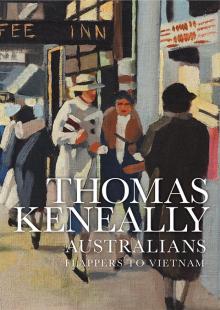 Australians: Flappers to Vietnam
Australians: Flappers to Vietnam The People's Train
The People's Train Crimes of the Father
Crimes of the Father A Family Madness
A Family Madness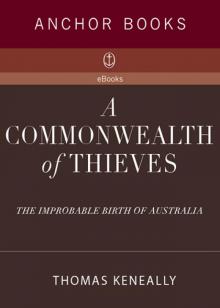 A Commonwealth of Thieves
A Commonwealth of Thieves Ned Kelly and the City of Bees
Ned Kelly and the City of Bees A River Town
A River Town Bettany's Book
Bettany's Book Blood Red, Sister Rose: A Novel of the Maid of Orleans
Blood Red, Sister Rose: A Novel of the Maid of Orleans Victim of the Aurora
Victim of the Aurora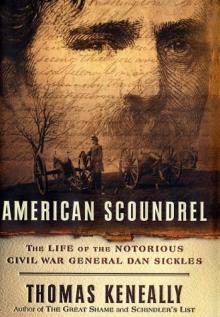 American Scoundrel American Scoundrel American Scoundrel
American Scoundrel American Scoundrel American Scoundrel Three Cheers for the Paraclete
Three Cheers for the Paraclete Australians: Origins to Eureka: 1
Australians: Origins to Eureka: 1 The Power Game
The Power Game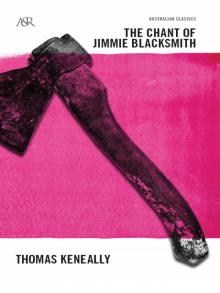 The Chant Of Jimmie Blacksmith
The Chant Of Jimmie Blacksmith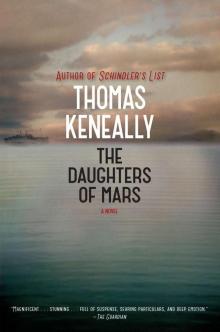 The Daughters of Mars
The Daughters of Mars Searching for Schindler
Searching for Schindler The Great Shame: And the Triumph of the Irish in the English-Speaking World
The Great Shame: And the Triumph of the Irish in the English-Speaking World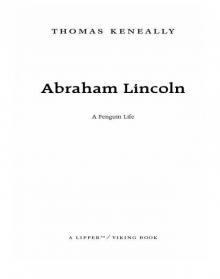 Abraham Lincoln
Abraham Lincoln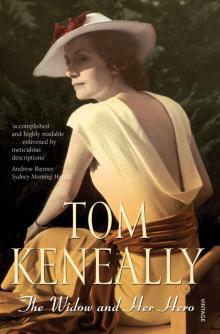 The Widow and Her Hero
The Widow and Her Hero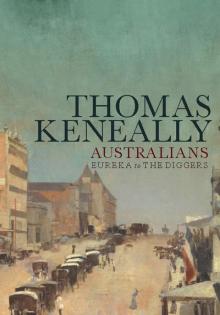 Eureka to the Diggers
Eureka to the Diggers Shame and the Captives
Shame and the Captives The Survivor
The Survivor Jacko: The Great Intruder
Jacko: The Great Intruder The Book of Science and Antiquities
The Book of Science and Antiquities Homebush Boy
Homebush Boy The Playmaker
The Playmaker To Asmara: A Novel of Africa
To Asmara: A Novel of Africa A Woman of the Inner Sea
A Woman of the Inner Sea The Tyrant's Novel
The Tyrant's Novel Australians
Australians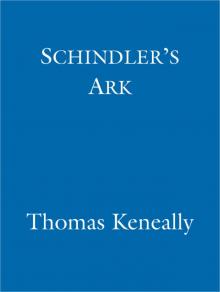 Schindler's Ark
Schindler's Ark The Soldier's Curse
The Soldier's Curse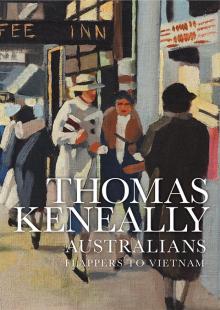 Australians, Volume 3
Australians, Volume 3 Blood Red, Sister Rose
Blood Red, Sister Rose A Victim of the Aurora
A Victim of the Aurora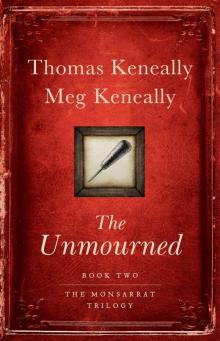 The Unmourned
The Unmourned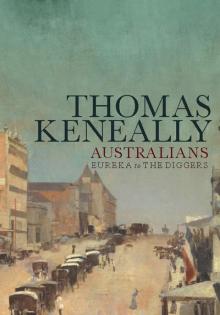 Australians, Volume 2
Australians, Volume 2 To Asmara
To Asmara